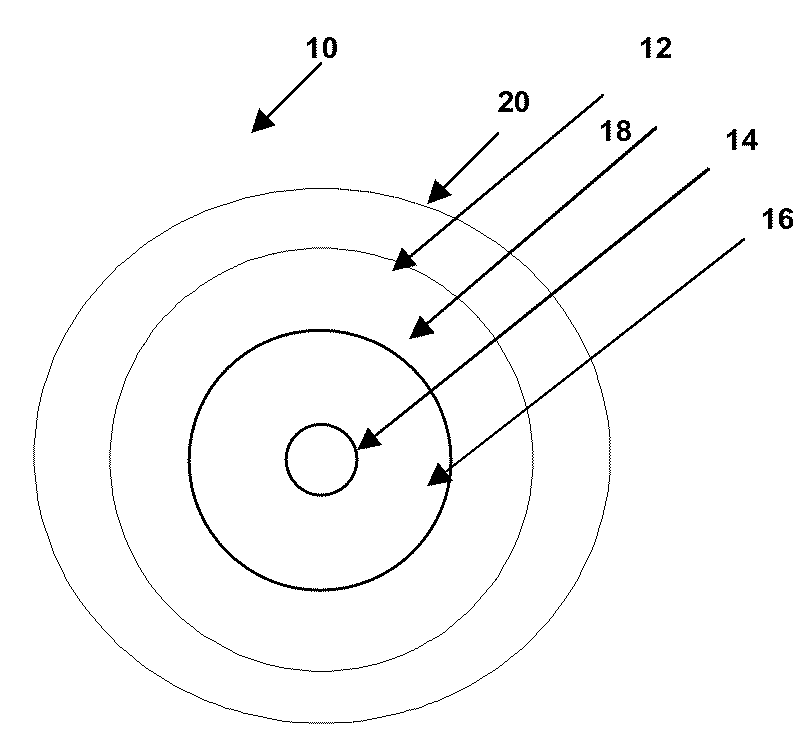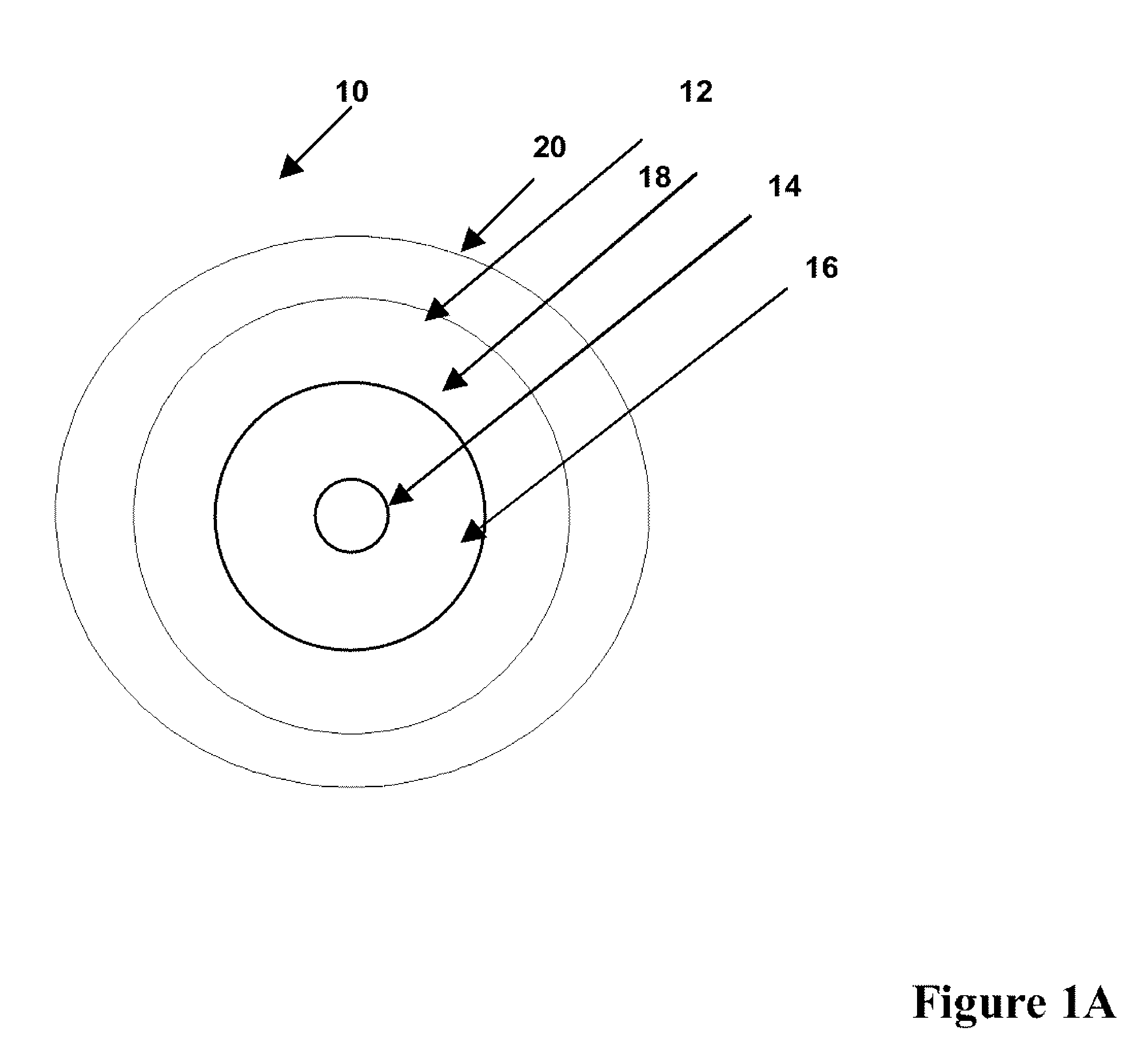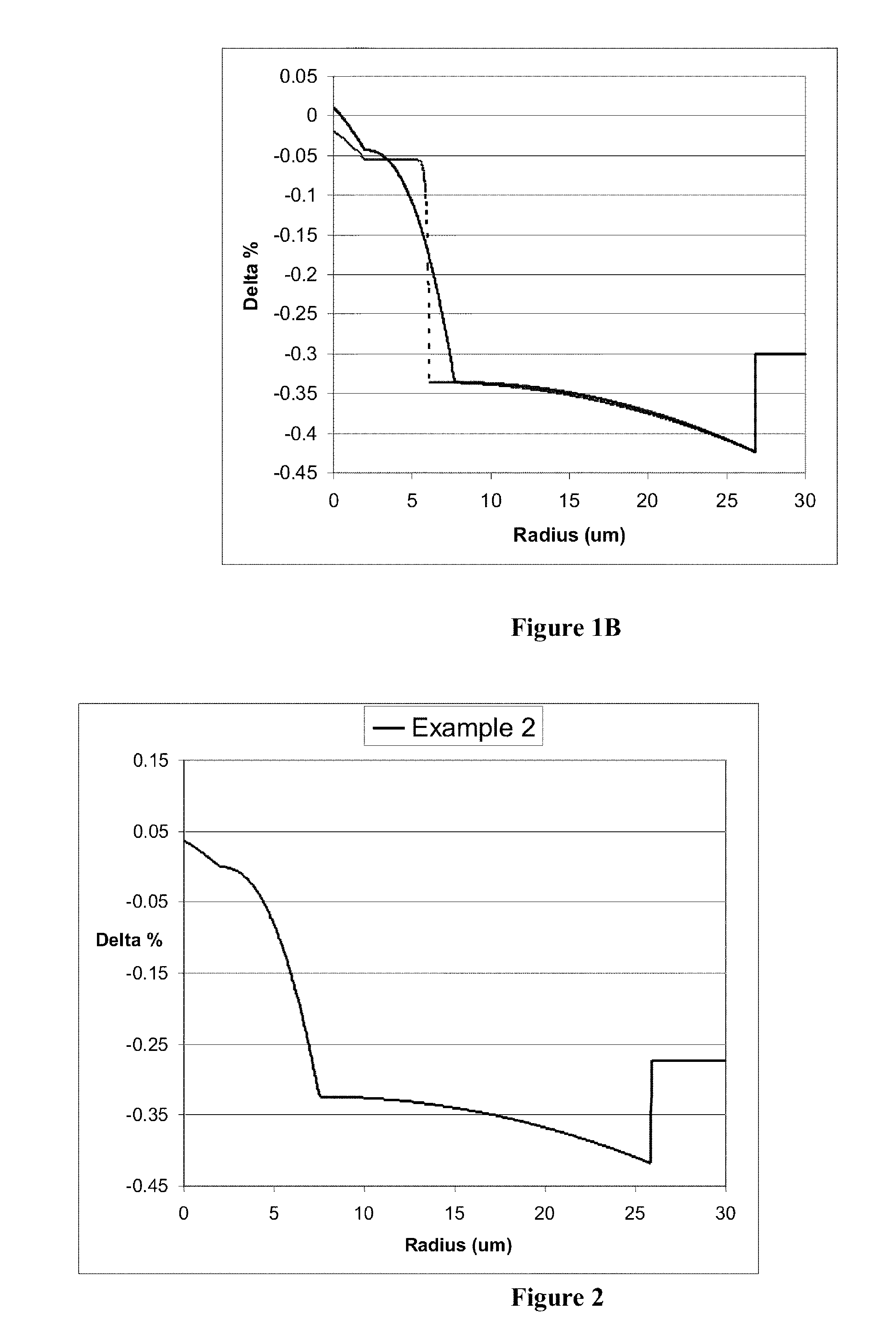Large effective area fiber with graded index GE-free core
a technology of ge-free core and effective area, applied in the field of optical fibers, can solve the problems of signal degradation, non-linear optical effect of high-power systems, and high-power systems that suffer from non-linear optical effects
- Summary
- Abstract
- Description
- Claims
- Application Information
AI Technical Summary
Problems solved by technology
Method used
Image
Examples
embodiment (
Embodiment(s) of the Invention
[0035]Reference will now be made in detail to the present embodiment(s) of the invention, examples of which are illustrated in the accompanying drawings. Whenever possible, the same reference numerals will be used throughout the drawings to refer to the same or like parts. One embodiment of the optical fiber of the present invention is shown in FIG. 1A, and is designated generally throughout by the reference numeral 10. The waveguide fiber 10 includes a core 12 having an effective area of about 100 μm2 or more at a 1550 nm wavelength (for example, 100 μm2 to 160 μm2, or 105 μm2 to 150 μm2, or 120 to 140 μm2 at a 1550 nm wavelength), and α value 1.5≦α≦10, and a cladding 20 surrounding the core. A typical range of α values in the exemplary fibers described herein is 1.5 to 4, for example 1.8≦α≦3. The exemplary refractive index profile (relative refractive index delta, vs. radius) of this fiber shown schematically (solid line) in FIG. 1B.
[0036]The core 12 ...
PUM
 Login to View More
Login to View More Abstract
Description
Claims
Application Information
 Login to View More
Login to View More - R&D
- Intellectual Property
- Life Sciences
- Materials
- Tech Scout
- Unparalleled Data Quality
- Higher Quality Content
- 60% Fewer Hallucinations
Browse by: Latest US Patents, China's latest patents, Technical Efficacy Thesaurus, Application Domain, Technology Topic, Popular Technical Reports.
© 2025 PatSnap. All rights reserved.Legal|Privacy policy|Modern Slavery Act Transparency Statement|Sitemap|About US| Contact US: help@patsnap.com



